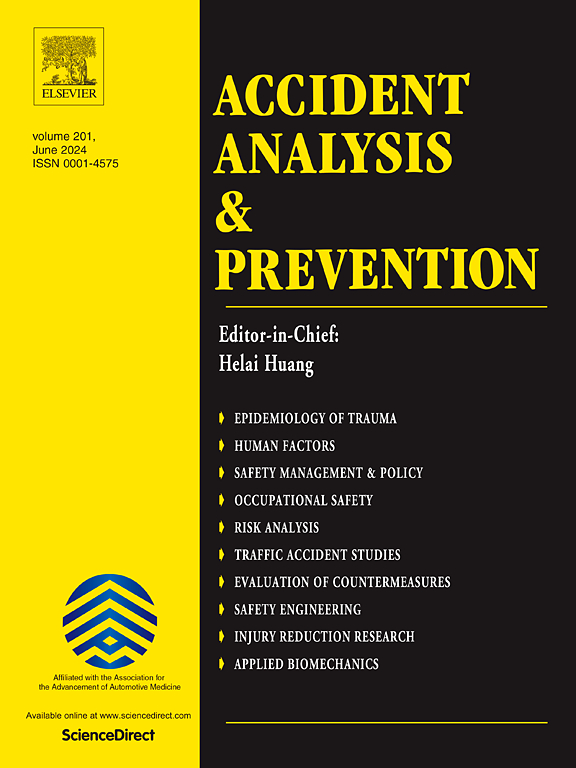基于Vision Transformer和SHAP的自动驾驶汽车可解释安全评估场景综合生成方法。
IF 6.2
1区 工程技术
Q1 ERGONOMICS
引用次数: 0
摘要
自动驾驶汽车(AVs)正处于商业化的风口浪尖,促使全球政府组织即将到来的移动阶段。然而,如果不深入了解人类驾驶汽车(HV)共存的道路上发生的事故,仅靠技术的进步并不能保证自动驾驶汽车的成功商业化。为了解决这一问题,“新车评估计划”(NCAP)正在进行中,基于场景的方法备受关注。通过精心设计反映各种现实情况的场景来评估自动驾驶汽车的安全性,这种方法具有独特的优势。虽然大多数情景研究倾向于数据驱动的方法,但这些研究存在一些缺点,包括数据视角、人工智能模型和情景标准。因此,我们提出了一个整体框架来生成功能、逻辑和具体的场景。该框架由基于真实驾驶激光雷达数据的可解释场景(x - scenario)和使用可解释人工智能(XAI)的视觉趋势解释组成。该框架由以下四个部分组成:(1)激光雷达PCD体素化和运动特征提取;(2)利用visual XAI和visual Transformer (ViT)生成逻辑场景中元素的范围值,对关键情景进行分类并生成注意图;(3)利用SHapley加性解释(SHAP)分析输入数据特征之间的重要性和相关性,根据最相关的标准选择场景;(4)自动驾驶汽车安全评估方案的组成。从我们的框架中生成的x场景涉及高速公路和城市道路上的自我车辆和周围物体的参数。利用我们的框架,可以创建高度可信的自动驾驶安全评估场景。这项新颖的工作提供了一个集成的解决方案,通过解释场景选择过程来生成可信赖的自动驾驶安全评估场景。本文章由计算机程序翻译,如有差异,请以英文原文为准。
An integrative approach to generating explainable safety assessment scenarios for autonomous vehicles based on Vision Transformer and SHAP
Automated Vehicles (AVs) are on the cusp of commercialization, prompting global governments to organize the forthcoming mobility phase. However, the advancement of technology alone cannot guarantee the successful commercialization of AVs without insights into the accidents on the read roads where Human-driven Vehicles (HV) coexist. To address such an issue, The New Car Assessment Program (NCAP) is currently in progress, and scenario-based approaches have been spotlighted. Scenario approaches offer a unique advantage by evaluating AV driving safety through carefully designed scenarios that reflect various real-world situations. While most scenario studies favor the data-driven approach, the studies have several shortcomings, including perspectives of data, AI models, and scenario standards. Hence, we propose a holistic framework for generating functional, logical, and concrete scenarios. The framework composes explainable scenarios (X-Scenarios) based on real-driving LiDAR data, and visual trend interpretation using eXplainable AI (XAI). The framework consists of four components as follows: (1) voxelization of LiDAR PCD and extraction of kinematic features; (2) classification of critical situations and generation of attention maps using visual XAI and Vision Transformer (ViT) to generate range values of elements in logical scenarios; (3) analysis of the importance and correlations among input data features using SHapley Additive exPlanations (SHAP) for selecting scenarios based on the most relevant criteria; and (4) composition of AV safety assessment scenarios. X-scenarios generated from our framework involve the parameters of ego vehicles and surrounding objects on the highways and urban roads. With our framework highly trustworthy AV safety assessment scenarios can be created. This novel work provides an integrated solution to generate trustworthy scenarios for AV safety assessment by explaining the scenario selection process.
求助全文
通过发布文献求助,成功后即可免费获取论文全文。
去求助
来源期刊

Accident; analysis and prevention
Multiple-
CiteScore
11.90
自引率
16.90%
发文量
264
审稿时长
48 days
期刊介绍:
Accident Analysis & Prevention provides wide coverage of the general areas relating to accidental injury and damage, including the pre-injury and immediate post-injury phases. Published papers deal with medical, legal, economic, educational, behavioral, theoretical or empirical aspects of transportation accidents, as well as with accidents at other sites. Selected topics within the scope of the Journal may include: studies of human, environmental and vehicular factors influencing the occurrence, type and severity of accidents and injury; the design, implementation and evaluation of countermeasures; biomechanics of impact and human tolerance limits to injury; modelling and statistical analysis of accident data; policy, planning and decision-making in safety.
 求助内容:
求助内容: 应助结果提醒方式:
应助结果提醒方式:


